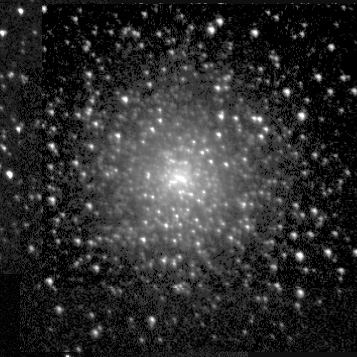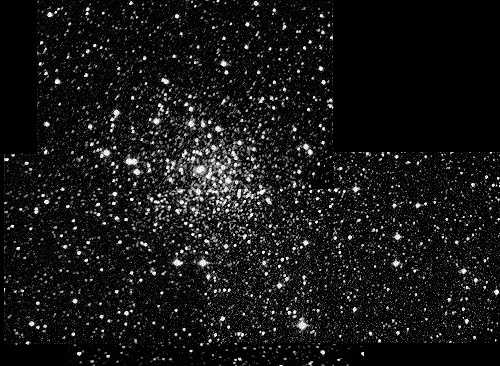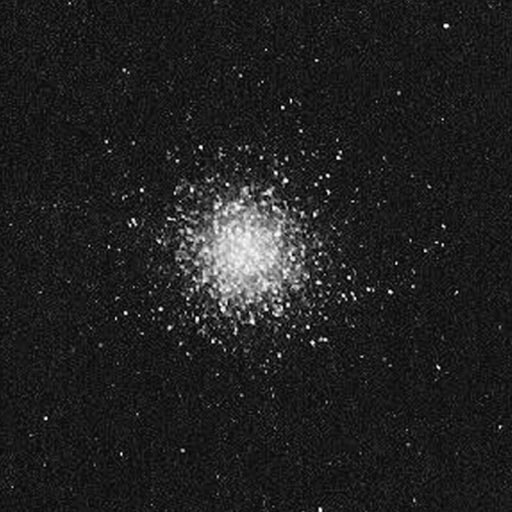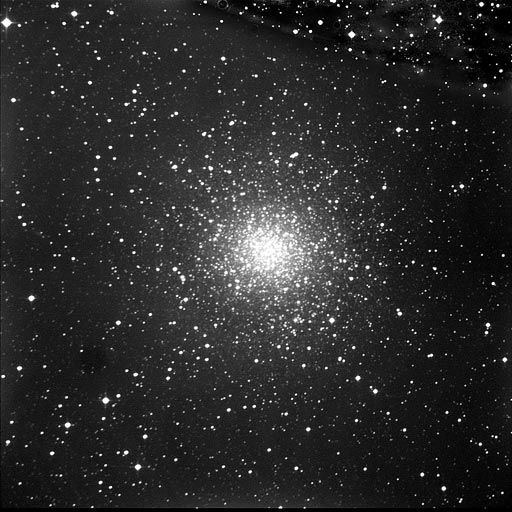
M-15 Globular Star Cluster in Pegasus
This Image was obtained on the Carroll telescope by Sara Martin and Pam Sable using an SBIG ST6 CCD camera. This somewhat condensed globular has a planetary nebula called Pease 1 located near M-15's core. A number of supernovae have been recorded in this cluster and it possess the third greatest number of variable stars in any globular cluster. The core of M-15 is thought to have undergone an event called core-collapse whereby the extremely dense core may have formed into a "black hole".
Brian W. Murphy of Butler University has written a story of the details of M-15 and globular clusters entitled A Thousand Blazing Suns: The Inner Life of Globular Clusters. It can be read here courtesy of the Astronomical Society of the Pacific.

|

M-71 Globular Star Cluster in Sagitta
Located
in the constellation Sagitta, M-71 appears to be less condensed
than some of the other examples of globulars on this page. Globular star clusters are classified by this
difference and are designated with the Roman numerals I (most
highly condensed) to XII (loosely condensed). The class for
M-71 is undetermined, but probably higher than IX. M-13 is class
V, M-14 = class VIII, M-15 = class IV. This image is a mosaic
of 4 CCD frames of 30 seconds' exposure each. Steve Brewster used the 30-inch (
0.76-m) f/6 Carroll reflector + SBIG ST6 camera.
|



